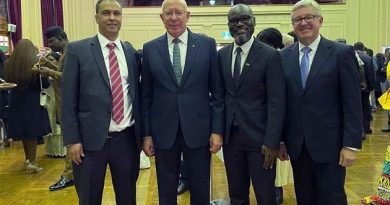After the moon, India launches rocket to study the sun

New Delhi: India launched its first spacecraft dedicated to studying the sun on Saturday, less than two weeks after making history with a successful moon landing.
The Aditya-L1 spacecraft was launched from the Satish Dhawan Space Centre in Sriharikota island, off the Bay of Bengal, at 11:50 a.m. local time.
The craft will take over four months to reach its destination, to orbit around 1.5 million km from Earth and observe the photosphere and chromosphere and study solar wind particles and magnetic fields.
“After some earth maneuvers the Aditya-L1will start its journey to the L1 point — a very long journey of almost 125 days, so let us wish all the very best to Aditya spacecraft for its long journey and being put around halo orbit of L1,” Sreedhara Panicker Somanath, head of the Indian Space Research Organization, said in a televised address.
Indian authorities have not disclosed the cost of the mission, but local media estimated it to be around $46 million.
Aditya, which means “the sun,” is heading for Lagrange point 1, an area that lies between the sun and Earth where the gravitational pulls of both cancel each other out, which will allow the spacecraft to remain in orbit with little use of fuel.
“Lagrange-1 is a suitable location to look at the sun,” Lt. Gen. A.K. Bhatt (Retd.), director general of the Indian Space Association told Arab News. “We have multiwavelength observation which will monitor all these dynamic events that happen in the solar atmosphere, which directly impact the interplanetary space environment and, in turn, influence the Earth’s environment.”
India’s solar mission adds to its status as an emerging space superpower, building on ISRO’s historic success on Aug. 23, when it landed the moon rover Chandrayaan-3 on the lunar surface, making India the first country to land near the lunar south pole and the fourth to land on the moon — after the US, Russia, and China.
“Working on two major projects and executing them within (a month of each other) is quite momentous,” said Dipankar Banerjee, director of the Aryabhatta Research Institute of Observational Sciences in Nainital, which specializes in astronomy and solar physics. “It also demonstrates to the global players that India is not behind; we have the manpower and the capacity to execute such major projects.”
To date, the US is the only other country to have explored the sun. It launched the Parker Solar Probe in 2021.
“This is a huge milestone and it’s also a technological demonstration from the Indian Space Research Organization, because, so far, only NASA has been able to successfully send satellites to Lagrange-1,” Banerjee told Arab News. “We still have to reach there, but it’s a big milestone that we have started our journey.”
Source – Arab News




